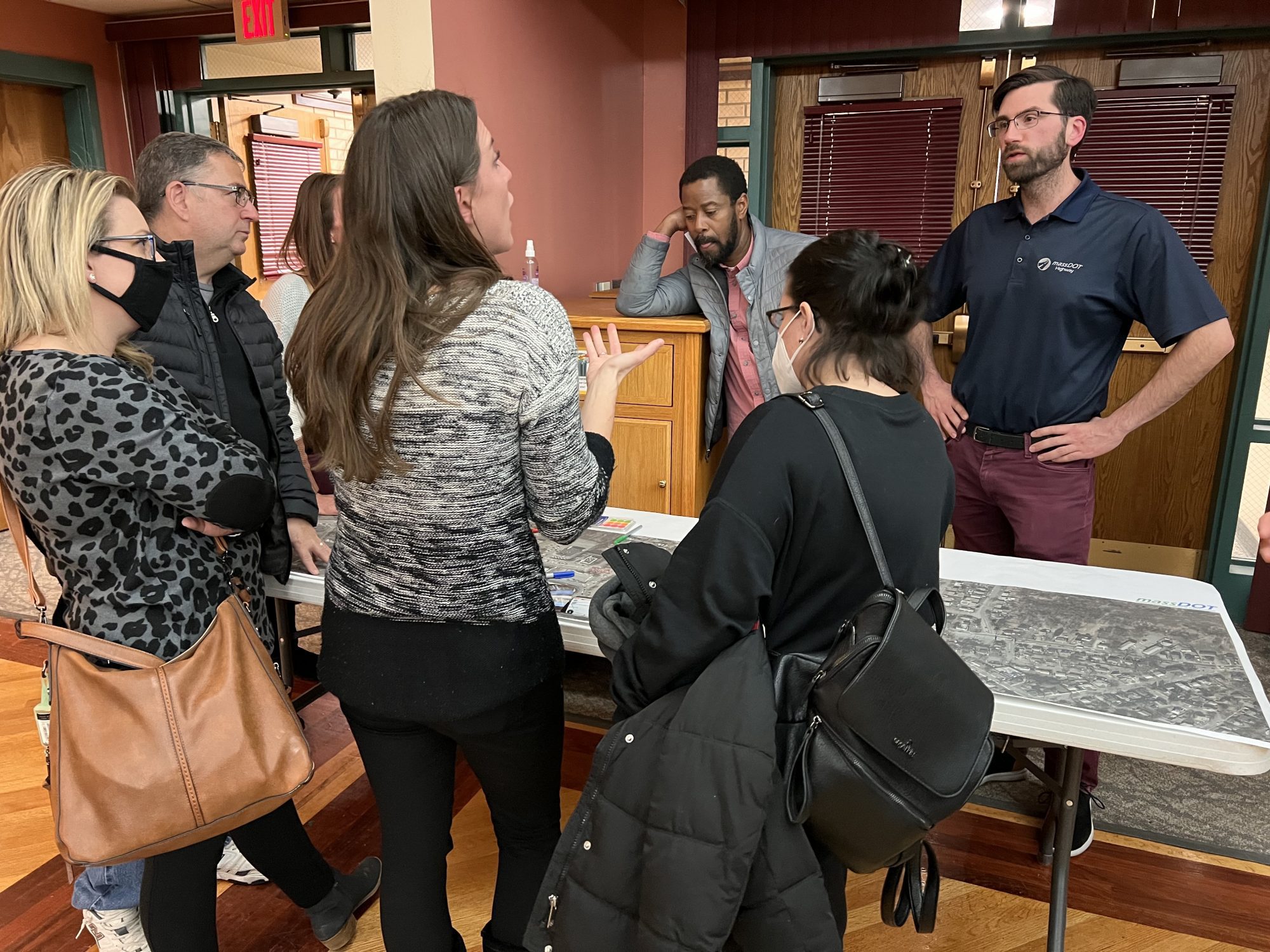Peabody — The Massachusetts Department of Transportation held a public workshop on Tuesday in Peabody to get feedback on changes that have been made to Route 114. Some attendees were unhappy with the workshop while others thought it was productive.
The workshop started out with a presentation from Kayla Sousa, senior project manager at MassDOT, where she showed what has been done so far and shared the results of a survey on the public’s opinion of the changes.
Changes were implemented because of safety issues with the route, where multiple fatalities had been reported. So far, protected left turns have been installed, crosswalks have been created, changes to two way left-turn lanes have been made and an extra lane has been removed.
“In this project, our primary focus really was safety. We didn’t come out and try to ruin operations but we were not trying to make traffic better. That was not a project goal of ours. So we were really focused on safety while trying to balance everything else,” Sousa said during her presentation.
The survey results were as follows: Protected left turns were generally seen as effective by the public; 45 percent of people were neutral about the crosswalks; 32 percent strongly disagreed that changes to two way left-turn lanes were effective; and 61 percent said they strongly disagreed that the removal of a lane was effective.
The opposition to removing a lane stems from drivers saying it adds time to their travel by causing more traffic. The data MassDOT collected shows that the increase in travel time is significantly lower than what the public is saying, Sousa said.
“So our high level findings so far is that there’s a disconnect or a discrepancy between data, both the analysis that predicted the delay and the data that we’re using to evaluate it, and what is being communicated to us by the people who use the road every day. And we’re working to bridge that gap,” Sousa said.
After the presentation, the workshop began. MassDOT representatives laid maps throughout the room and supplied markers and sticky notes for attendees to write their thoughts, concerns and recommendations on the project. One side of the room was dedicated to the western corridor of the route and the other side to the eastern corridor.
“I think everyone wants a solution that works for everything, like it’s like people can get to where they’re going as fast as they want, people want to walk and bike can like it’s safe. And some things always kind of got to give in reality and with safety usually we come up against opperations,” Sousa said in an interview after her presentation.
Regarding the reactions to the lane removal, she said the safety benefits might not be immediately obvious to people.
Joel Saslaw, a Peabody resident and former Ward 5 city councilor, is one of the people who initially brought forward the need for change due to safety concerns. But he believes the changes made to the eastern corridor were unnecessary and only the western corridor should have changed.
“Changes made to the eastern corridor have basically not accomplished anything,” Saslaw said.
The “divide and conquer” setup of the workshop was something he did not think was effective because it did not allow for the public to make spoken statements.
“I know it’s the workshop, but sometimes you gotta get a sense of the room, let people talk,” Saslaw said.
John Mellace, a Peabody resident, lost his brother in 2020 in an accident on Route 114.
“The road is dangerous. It’s an outdated design for a road. It is designed for probably half the travel the amount of cars that are traveling on that road, the speed is too high,” Mellace said.
He said he understands why MassDOT decided to have the workshop but is concerned about more fatalities happening before real changes are made by the state.
“The lane hashing that was done was the biggest waste of money or waste of paint I’ve ever seen because it was shiny and bright for, what, a month. And now we’ve got salt on it. You can’t even see it. So it did nothing. No one’s going to learn a new traffic pattern without some type of actual structural changes,” Mellace said.
Peabody City Councilor Anne Manning-Martin said the “continued collaboration” between the state and the public is a positive thing.
“There are still some bumps that we need to get through but the fact that the state and the neighbors are in the same room is how you get things done,” Manning-Martin said.

